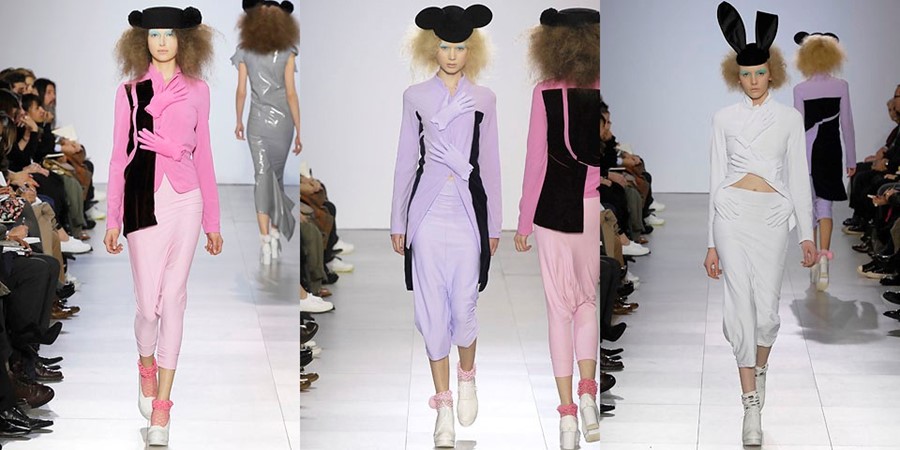After a season that focused below the wrist, we look at some of our favourite hands in fashion – from Schiaparelli to Jacquemus
This season was a particularly notable one for hands: from their careful positioning at Yohji Yamamoto, where they delicately highlighted elements of the garments' structure, to their being sternly clasped in front of the body at Gareth Pugh. At Giles, some models placed their hands on their hips, some raised them behind their heads, some used them to conceal parts of their face. Max Mara's women held their coats around their bodies and Galliano's hunched characters at Maison Margiela seemed to jam their hands into their pockets. The practice of gesture on the runway, from the delicate to the severe to the hauntingly emotive (like at Comme des Garçons), came into force.
And then, there were the gloves. At Prada, elegant evening gloves in pastel hues reached over the elbow, all the way up to the upper arms. At Maison Margiela, they looked alarmingly like marigolds, scrunched around the wrists. Ann Demeulemeester had fitted black leather, Alexander McQueen's were two-tone, Yamamoto's cut off just past the knuckle. It was a season that focused below the wrist in many ways – and, in honour of the phenomenon, we are looking back over some of our favourite hands in fashion.
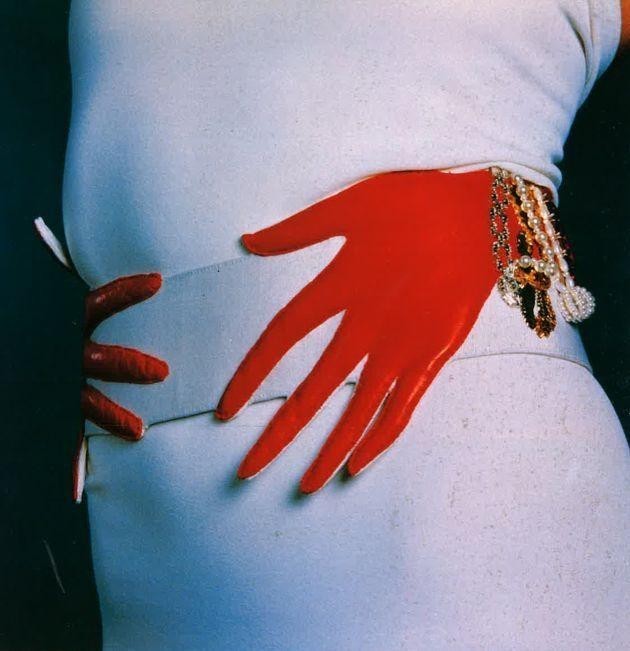
Elsa Schiaparelli
When it comes to incorporating hands into fashion, the pioneer was Elsa Schiaparelli – and her legacy in fashion (and its use of hands) is impossible to ignore. Her affiliation with the Surrealist movement, where hands were an aesthetic fixture, could clearly be seen not only through her collaborations with Salvador Dalí and Jean Cocteau but throughout a significant proportion of her clothing design. Her 1934 collection showed belts made from hands, a handbag with hand fasteners, a jacket decorated with a hand motif and her interest in trompe de l'oeil and the subjects of surrealism continued throughout her work until she closed her eponymous house in 1954.
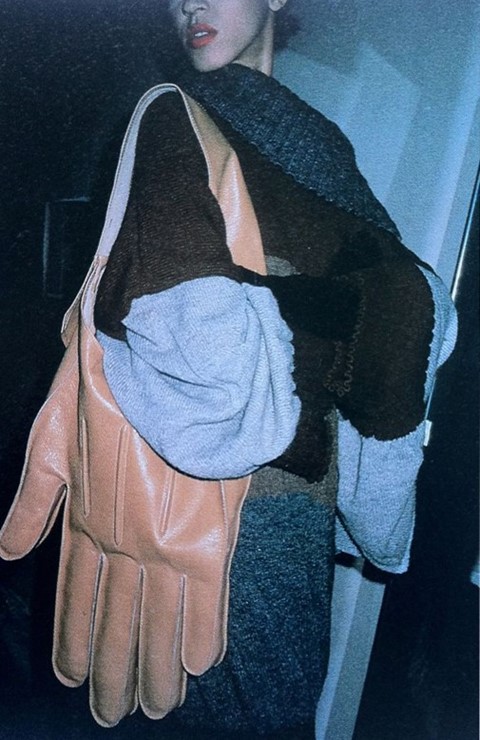
Jean-Charles de Castelbajac
Like Schiaparelli, Moroccan-born Jean-Charles de Castelbajac took plenty of influence from the Surrealists – in fact, his A/W11 collection was entitled Woman Ray and was created in homage to the women of the movement.
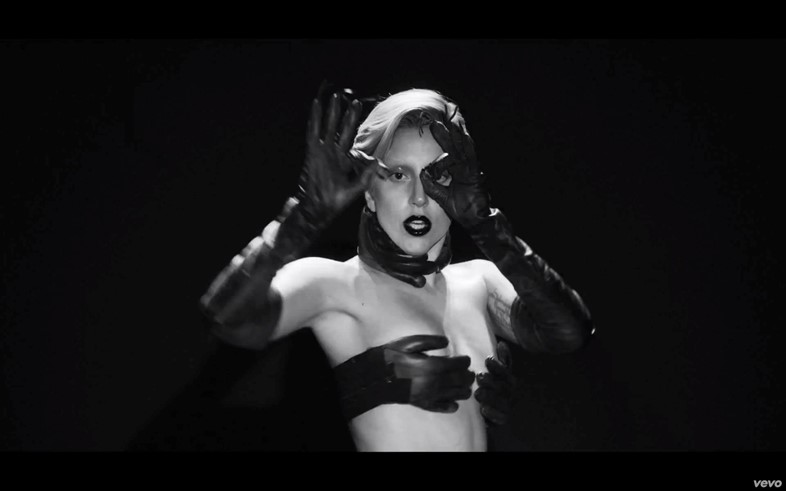
The clothes were also explicitly referencing his collections of the 70s and 80s and, as we can see from his incredible hand-shaped bag from and Lady Gaga's video from 2013 (where she wears the A/W11 collection), the motif of hand silhouettes has been present throughout his career.
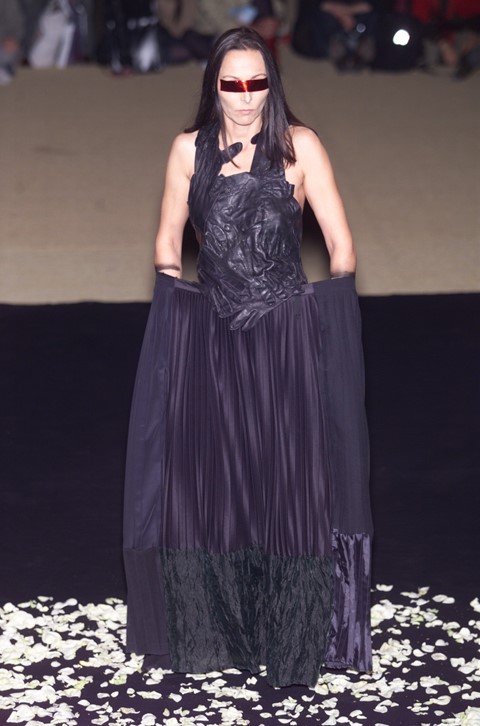
Maison Martin Margiela
Maison Martin Margiela is a house which has been celebrated for pushing the boundaries of design and fashion ever since it was founded by Martin Margiela in 1988. Another advocate of surrealist themes like trompe l'oeil, the bustier constructed from gloves in the S/S01 collection shows their incorporation of avant-garde concepts with a nuance and precision that has come to define the brand.
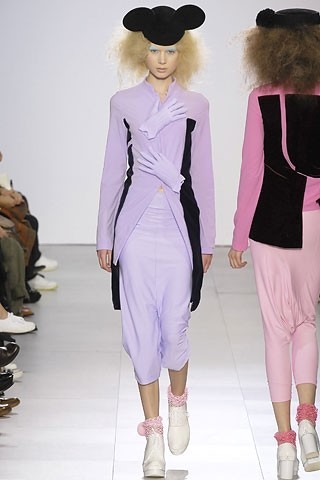
Comme des Garçons
Another brand renowned and revered for their innovation, Comme des Garçons's A/W07 collection showed an explicit reference to Dalí and Schiaparelli's work together: the 3D hands that appeared to be clutching at the chests of the models were simultaneously alluding to the Skeleton Dress and hand brooch collaborations.
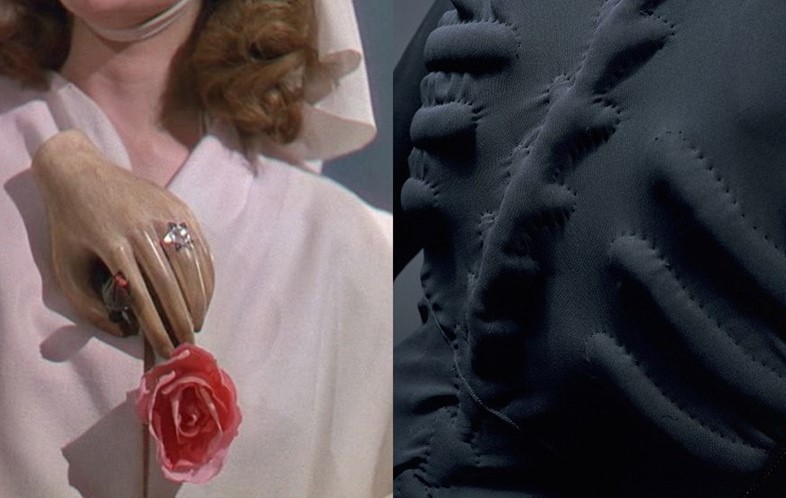
Yet, while the thirties collection's references were clear, Rei Kawakubo managed to manouver them into a collection that explored the psyche of the modern woman (in a similar mode to that of the Surrealists, who explored the psyche of their own time). From Minnie-Mouse headpieces, candy colours and appliqued bows, presented with suggestions of disembodied groping, it was a brilliantly considered evolution of the hand in fashion.
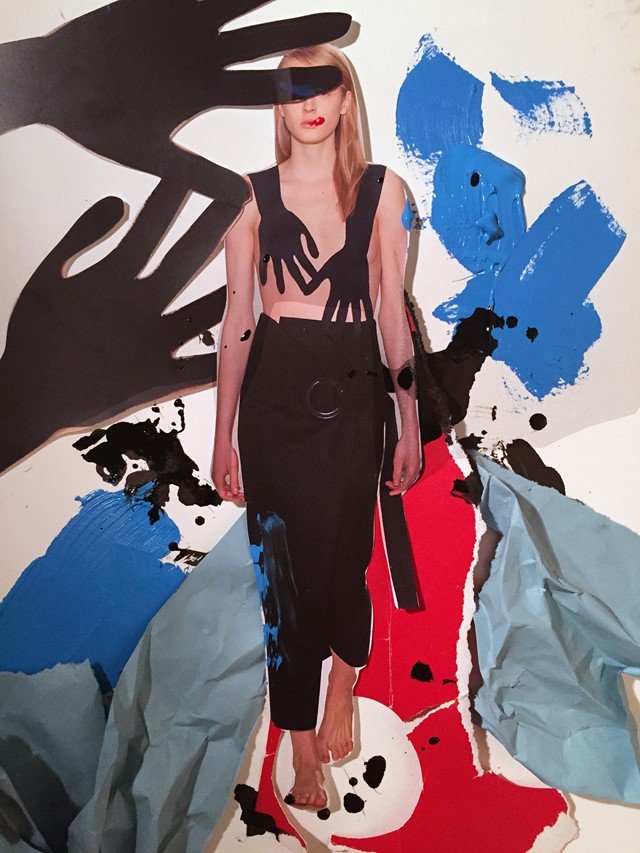
Jacquemus
French designer Jacquemus employed hand-shaped silhouettes for his A/W15 presentation, where they encircled the necks and covered the breasts of bare-chested, bare-footed models. But, in spite of the clear references to surrealism in his two-faced makeup and employment of the hand motif, his hands were more like pre-school paper cut-outs that evoked a youthful naïveté and the freedom of childhood.
